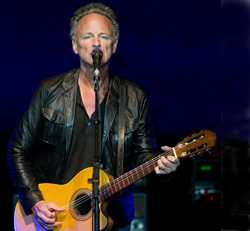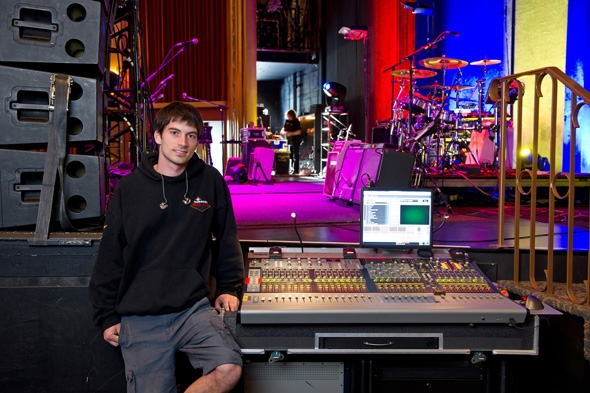
The show was recorded during rehearsals so that the interactions among the various musical voices could be studied.
Among other things, the balance between the audio coming from the stage as compared to the house stood out, as Colby had been told.
Immediately addressing the stage sound, he continued the process on the road, eventually striking a better balance that was still subject to constant refinement.
“It’s been an evolution of mutual discovery for both Lindsey and I,” Colby relates. “I’ve learned a lot from working with him, mainly about the discipline I need to properly mix the show. Given our audiences, we started out very quietly and then ramped right up where we had to be for all of the big hits at a nice volume. Then we ramped back down for the encore.
“My main duty was to have the discipline to keep things running in a controlled manner. If I introduced volume, I did it little-by-little. I couldn’t allow myself to get into a volume war with the stage. I’ve worked a lot of the rooms we played with Juanes, which is a strictly ‘ear’s act with everything in iso-boxes onstage. Lindsey is all wedges, all backline. The difference between the shows in terms of the reflections introduced from the stage is startling.”
Aiding The Cause
Onstage, eight Showco SRM wedges were deployed. Only the drummer used IEM. Monitor engineer Andy Hill gave guidance to the stage mixes, using an Avid Profile as well.
A total of 48 inputs wound its way down from the stage to the house mix position, which more often than not was off to the side or under a balcony given the nature of the rooms encountered on tour, which were not amenable to losing premium seats in the house to a console’s footprint.
Hard-wired microphones were posted at all vocal positions, with Buckingham standing in front of an Audio-Technica AE6100 hypercardioid dynamic mic and all others supplied with Shure Beta 58 supercardioid dynamics.
In keeping with the old-and-new-together vibe, drums were electronic courtesy of Roland, a fact that translated into little need for mic’ing other than a pair of AKG 414s at overheads and a mic on high-hat. Kick, snare, and rack and floor toms were taken Radial DI direct, as were keys and all other applications.
Stanley Lamendola stood in as Buckingham’s guitar tech, managing the considerable chore of wrangling a sizable collection of instruments as well as effects pedals, amps, and cabinet mics.
The crew was further complemented by Clair crew chief Rich Schoenadel, who aided the cause of sonic consistency by helping to tame the four Clair i-3 Series cabinets stacked on top of Clair BT 218 subwoofers on each side of the stage.


